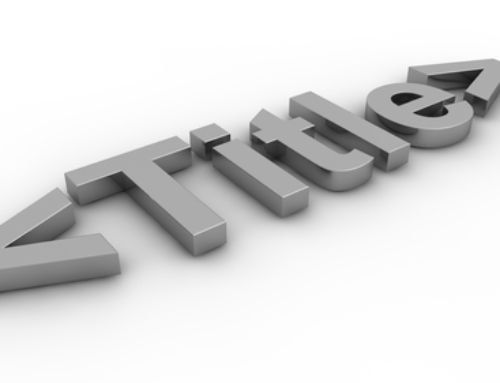Scientific publications are an indispensable part of a scientist’s life. Sharing one’s research findings with the world is an exciting and enriching experience. As much pleasure a publication may bring to a scientist, the process of scientific writing and publication may seem an uphill task to a budding researcher. Anyone new to the research field may wonder what a research paper really looks like. Many students fumble when they are asked to write a research paper, since they don’t know how and where to begin. My aim in writing this article is to introduce students to the world of scientific research article writing.
Getting into the details of this field is beyond the scope of this article, but I would like to highlight the basic structure of a scientific paper. It is imperative to mention at the outset, that it takes some amount of experience to master the skills of good scientific and technical writing, but I hope this article can serve as an impetus to commence your journey. To begin writing a research paper, also called a manuscript, the first step would be to identify the journal you would like to submit it for publication. Journals have preset rules and guidelines, which authors need to follow while writing their article. These rules include, but are not limited to, the style and format of text, tables and figures, nomenclature for headings, numbering systems, bibliographic style and word count. Hence it is important to use these guidelines as a base while writing your article. Just like you follow a particular protocol while conducting an experiment, a research paper is also written in a structured format. This format is most commonly called the ‘IMRAD’, which stands for Introduction, Materials and Methods, Results And Discussion. Besides the IMRAD the other important parts of a research article are the Title, Authors and Affiliations, Keywords, the Abstract, the Conclusions, Acknowledgements and finally the Bibliographical references. Let’s understand the details of each of these aspects.
1. Title
The title of your paper is as important as the rest of your text. This is what will draw the attention of a potential reader towards your article. Thus, it is important that you make it short and catchy. There are many ways of writing a title; the most effective way would be to highlight the key finding of your research in simple language. You should pay particular attention to the format, style and length of your title to maintain its clarity.
2. Authors and Affiliations
The name of the author(s) along with their affiliations should follow the title of your paper. Author names should be in the descending order of their contribution to the research work. Usually the principal investigator or the scientist who guides the research project is mentioned last in the list of authors. There after mention the name and address of the university or institution that the authors are affiliated to. If there are authors from different institutions, mention both institutions, and differentiate authors affiliated to a particular institution using a specific identification mark. The corresponding author should be labeled separately, and the author’s name and email address should be provided at the end of the manuscript’s first page.
3. Abstract Now that you have got the attention of your reader, it’s important to invoke curiosity for your article, thereby keeping your reader interested and wanting to read more. The abstract should do just this. The abstract is generally placed between the details of the institution/university and the introduction (or keywords where applicable). There are two types of abstracts: informative and indicative. An informative abstract is a gist of your research article. Thus it should present the aim and salient findings of your study in a succinct manner, while avoiding any explanations. An indicative abstract, mainly used for review articles, contains an overview of the subjects covered. Many readers tend to read the abstract and conclusions rather than the whole article. Hence it is important that these segments are well articulated. Many research journals restrict the number of words you can use in the abstract and conclusions or for that matter the whole research article. Hence you should pay particular attention to such details.
4. Keywords Some journals require a set of keywords to be listed from your research article. The list of keywords appears after the abstract and before the introduction section. Pay careful attention to the words you choose as these would help other researchers find your paper while they reference for research articles.
5. Introduction This section should help the readers understand the importance of your topic of study, in light of past research work and future scope. It is best to divide your introduction into three parts: one which gives an overview of the topic, second which highlights past research findings, and the third which enumerates the aims of your study along with your hypothesis. It is also vital to mention the novelty of your research and the importance to study it. Correctly mention the references to past research work in the text where they appear. Please refer to the section on ‘Bibliographical references’, for details on methods to cite data in your text.
6. Materials and Methods Just like writing any recipe in a cookbook, the materials and methods section deals with the experimental design or protocol and the details of animate and inanimate materials used for the study. Universally recognized techniques need not be explained in detail. Instead, simply name the principle it is based on or the internationally recognized test number along with referencing details such as a handbook of test methods. Novel methods should be described at length. If applicable, you can use pictures or images to better explain novel techniques. By mentioning details of your experimental technique, it also becomes easier for other trained researchers to conduct the same experiments if they desire.
Another method for explaining your experimental protocol is by using a flowchart. This will help you describe your sequence in a more efficient manner along with keeping the word count of your paper in check. Pay special attention to the journal’s specifications regarding the format of tables and figures.
7. Results and Discussion There are two ways in which this section appears in journals. Some journals combine results and discussion under one section, while others treat them as two different sections. As the name implies, ‘Results’ refer to the data or experimental results generated from the tests, while the ‘Discussion’ refers to the inferences you draw from your results. Let’s deal with them one at a time:
- Results: The section on ‘Results’ should be relatively easy, as it calls for compiling all your data into either a tabular form or as figures. Avoid mentioning findings that are irrelevant, but do not deliberately exclude data that may contradict your arguments or hypothesis. This is considered unethical; instead try to give reasons for the uncharacteristic nature of this data. There are many ways in which you can present your data, for example inductive or deductive manner, by level of importance, chronologically, problem solving and so on. The nature of your study and your individual preference will determine the choice you make in writing this section.
- Discussion: Having heaps of data are of no importance if you cannot deduce valuable findings from them. The section on ‘Discussion’ is thus very important and should be given ample amount of time and attention. You should systematically state what you interpret or infer from the data you have collected, against the background of existing knowledge. Refer to the hypothesis you stated in the Introduction and explain if and how your findings support your claims. Every study has some limitations and hence don’t shy from mentioning them. If you would like to challenge another researcher’s findings, respectfully state your reasons for the same with evidence from your research results. You could also suggest alternative ways of resolving such conflicts. Avoid making exaggerated claims and rely on facts rather than speculations.
8. Conclusions As mentioned earlier, the ‘Abstract’ and ‘Conclusions’ sections are most read, and hence you should pay special attention to these sections of your research paper. The ‘Conclusions’ are the salient findings of your ‘Discussion’ section, where you systematically list your research findings, either in the form of a paragraph or as points. Pay attention to the Journal’s instructions with regard to the format and word count.
9. Acknowledgements Acknowledgements usually appear just before the list of bibliographical references and after the ‘Conclusions’ section. In this section, thank any individual or institution from whom you received substantial help, either in the form of technical support, materials or funding for your research. Also specify the nature of help you received from them. Refer to your journal for any specifications they may have for this section.
10. Bibliographical references Any reference to past research work that you have cited in your paper should be systematically listed both in the body of your text as well as a list at the end of your manuscript.
- Citing References in the Body of your text: There are two main styles of citing references in the body of your paper: Harvard and Vancouver. In the Harvard style, the name of the author surname in full and year of publication is mentioned in the text, while in the Vancouver system a number (in superscript) is assigned either chronologically or alphabetically as they appear in the list of references.
- Citing References at the end of your paper: A research article concludes with the details of these cited references, in the form of a list, under the ‘References/ Bibliography’ section. The general structure of a ‘reference’ should include the author(‘s) names, the year of publication, the title of the paper, the name of the journal which published the article, the volume number, and the pages where the article appeared in the journal. You should pay attention to the format your journal specifies for listing references. Using a good reference manager such as Endnote or Zoterro will automatically format the references according to journal requirements, making the process efficient.
If you follow these general rules, you will be equipped to write a well-formatted article. Now that you know the basic structure of a scientific paper, the only thing left for you to do is to begin transforming your hard earned data into a scientific publication. Nothing can be more fulfilling than sharing your scientific achievements. Exchange your scientific knowledge to the world around you and explore its endless pool of knowledge. You will be amazed by the possibilities that await you!
Good Luck!




